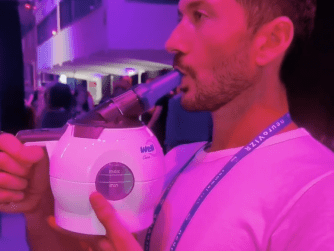Neurofeedback therapy is a procedure that uses brainwave real-time feedback regarding how one’s brain is functioning. Learn its amazing benefits here!
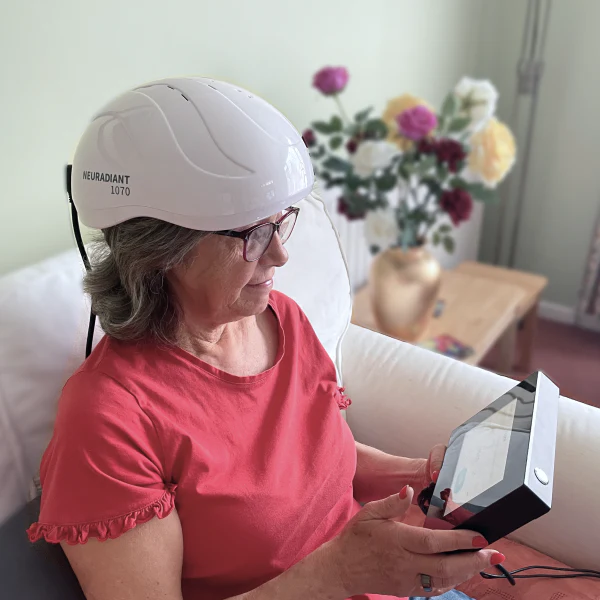
Neurofeedback therapy is a non-invasive procedure that uses brainwave feedback to help individuals regulate their own physiological and psychological states, providing real-time feedback about how the brain is functioning. Neurofeedback therapy enables patients to self-regulate and gain voluntary control over certain body functions that are typically involuntary (such as heart rate, muscle contraction, or brainwaves).
By using sophisticated technology, neurofeedback therapy conveys to the patient certain physiological processes that are usually not consciously perceived. This type of therapy is often used to help individuals with conditions such as brain injury, chronic pain, ADHD, stress, anxiety, depression, and insomnia, as well as for general mental and physical well-being.
3 Benefits of Neurofeedback Therapy
Combination of Neurofeedback Therapy and Photobiomodulation
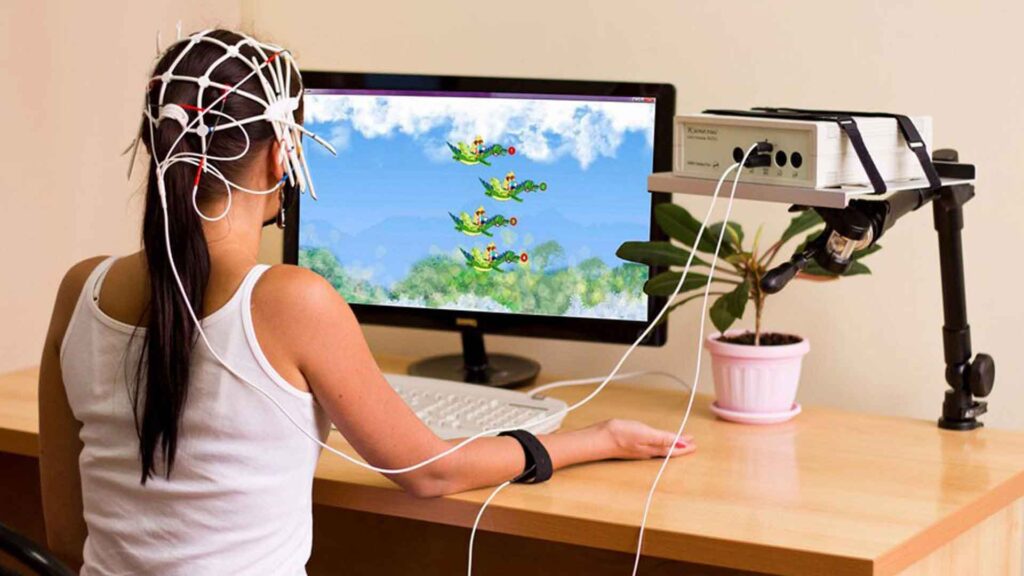
According to Berman et al. (2019), the combination of neurofeedback therapy and photobiomodulation appears to be a safe and effective method to stop disease progression and prevent further neuronal damage.
PBM-treated subjects in this study used a device with a 1068 nm light emitting diode (LEDs) with neurofeedback therapy and QEEG measurements to treat cognitive impairment and dementia. Of the initial signs and symptoms, ~75% showed an overall improvement. Impressive, right?
What is photobiomodulation?
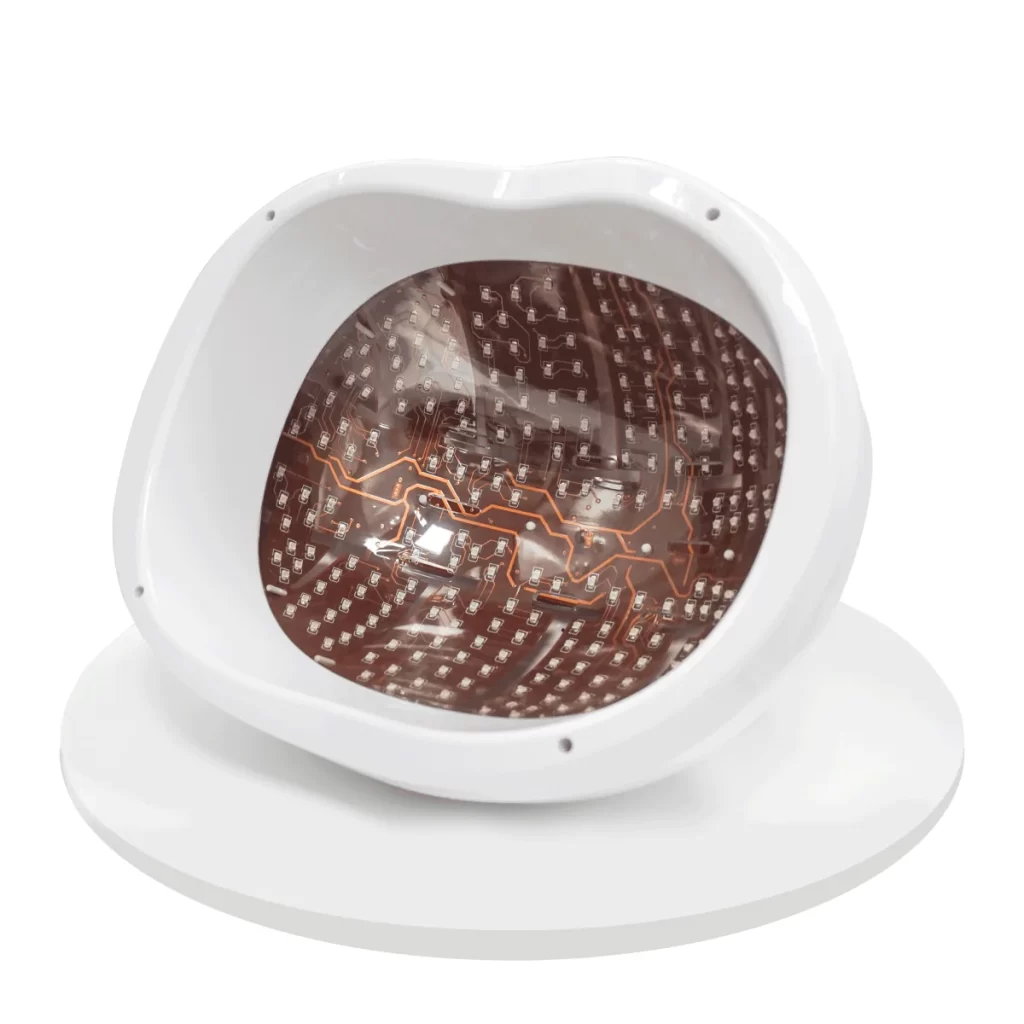
Photobiomodulation is the use of light energy to trigger photochemical changes within cellular structures, such as the mitochondria, that are receptive to near-infrared (NIR) light. This can help to heal, regenerate, stimulate, and protect damaged tissue. It is a painless therapy with no known side effects and its benefits are almost limitless. Research has shown that photobiomodulation can help decrease inflammation, leading to less pain or faster wound healing, improve energy and mood, decrease stress, and much more!
Although it is often perceived as essential when one has a medical condition, the truth is that everyone can benefit from transcranial photobiomodulation therapy. This is because it is able to penetrate the brain enough to produce beneficial effects in both healthy subjects and those with various pathologies (Gutierrez et al., 2020).
Photobiomodulation therapy is the use of light energy to trigger photochemical changes within cellular structures (mitochondria) that are receptive to red and near-infrared (NIR) light, healing, regenerating, stimulating, and protecting tissue that has been damaged.
It’s a painless therapy, with no known side effects. Its benefits are (almost!) boundless. According to research, photobiomodulation can help decrease inflammation, leading to less pain or wound healing, improve energy and mood, decrease stress, enhance cognitive performance, and much more!
Although its use can be perceived as essential when one has a medical condition, the truth is that everyone can benefit from transcranial photobiomodulation therapy, as it achieves enough brain penetration to produce beneficial effects in both healthy subjects and subjects with various pathologies (Gutierrez et al., 2020).
3 Benefits of Neurofeedback Therapy
How does photobiomodulation work?
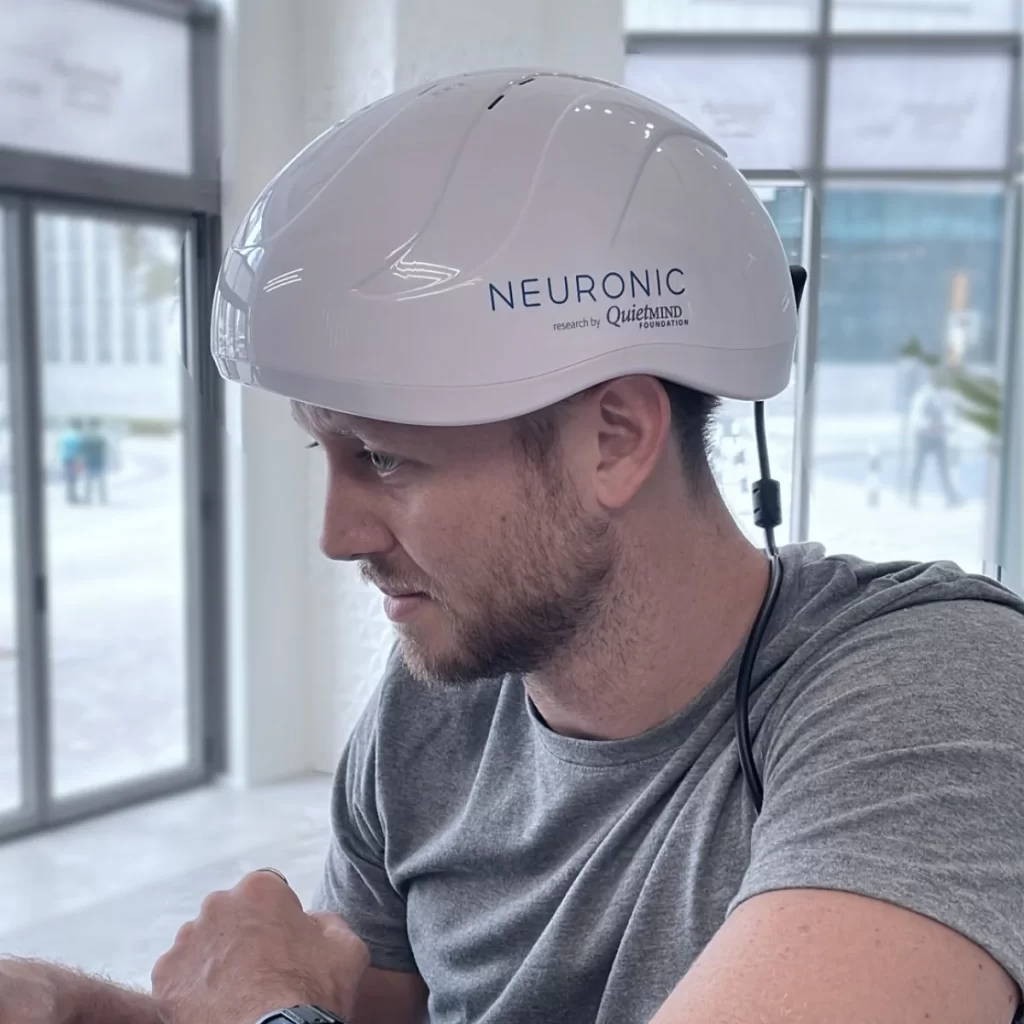
The light delivers photons, which are packets of light energy absorbed by the human body, similar to that of the sun providing energy to plants.
Light enters cells’ mitochondria, being absorbed by the chromophores – including the protein CCO Cytochrome C Oxidase – which then increases activity.
The mitochondria produce cellular energy by producing a molecule called adenosine triphosphate (ATP). The energy from this molecule enables us to carry out all physiological activities and provides energy to the brain cells.
In addition, the application of light energy leads to greater blood flow to the brain, allowing the delivery of nutrients and the removal of waste products. This is a new way of “charging” the brain and now research is starting to show significant benefits of this therapy for brain health!
Benefits of Neurofeedback Therapy

Neurofeedback therapy can improve sleep quality
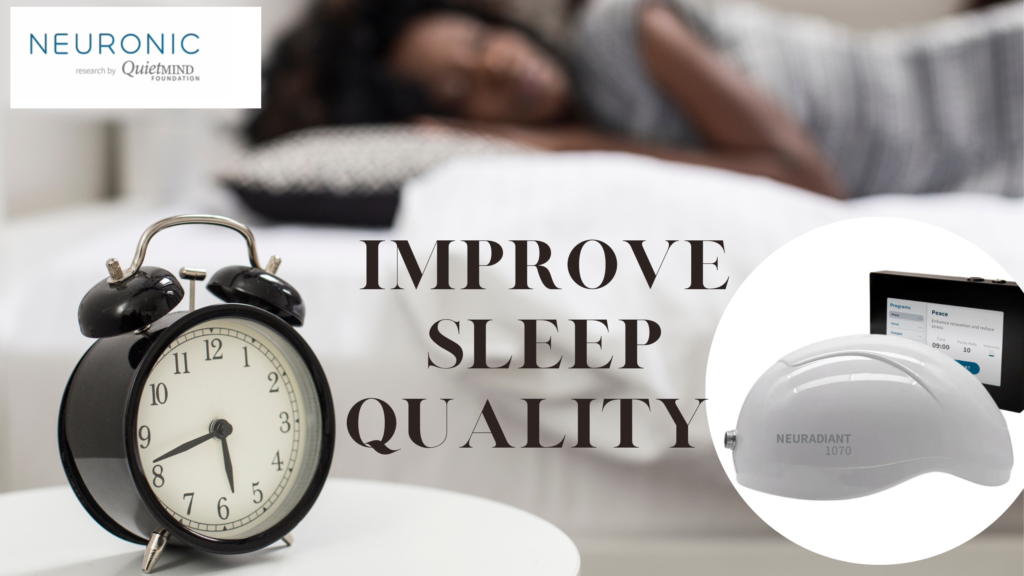
Sleep is an essential part of our day-to-day life, right? We know that it impacts every organ of our body, including the brain, the heart, the cellular metabolism, and even the immune function. But, despite its importance, many people still have trouble sleeping well.
It’s important to acknowledge that, according to a very recent study, sleep appears to be an indicator of “early detection and effective intervention for Alzheimer’s disease” as “prefrontal cortex atrophy is associated with both sleep disruption and cognitive decline” (Zhao et al., 2022). Hence, poor quality sleep over time has been associated with a risk of developing neurodegenerative diseases (Valverde et al., 2022).
The good news is that, according to the first study (Zhao et al., 2022), after five days of photobiomodulation therapy targeting the prefrontal cortex, sleep efficiency and N-back cognitive performance, i.e., the working memory capacity were both improved (Zhao et al., 2022). Besides this, photobiomodulation has been shown to improve “the flow of cerebrospinal fluid and the clearance of toxic waste products from the brain” (Moro et al., 2022), “which is required for the proper and healthy functioning of all cerebrovascular and parenchymal brain cells” (Kaur et al., 2021).
Neurofeedback therapy is a powerful tool to improve sleep, as it works on the areas of the brain that regulate it. By rewarding the brain for creating healthier patterns, most people can use neurofeedback therapy to train their brains to allow sleep again
Neurofeedback therapy is an effective treatment for anxiety and depression
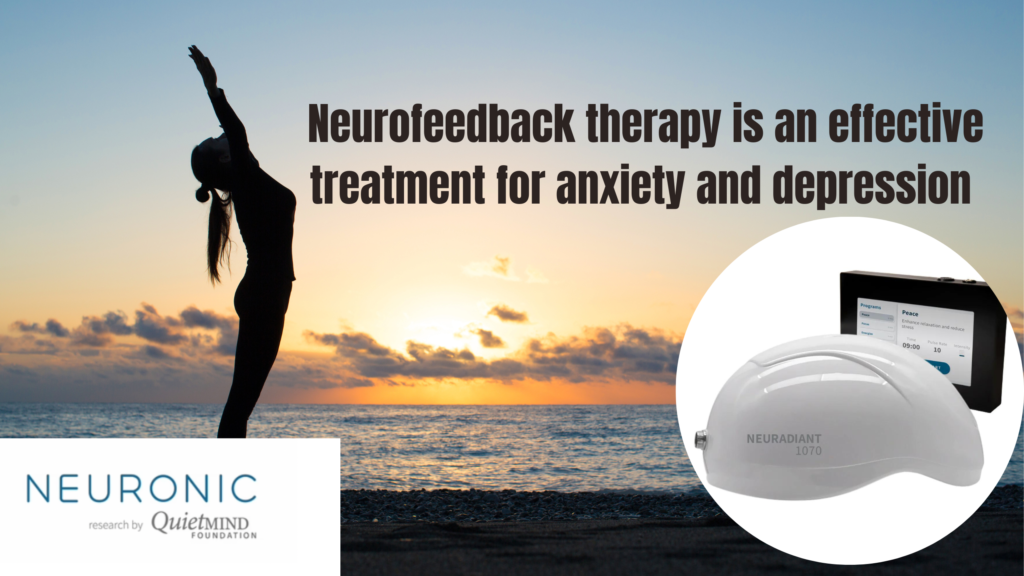
People are more and more open about their anxiety and depression nowadays, despite the fact that these disorders were considered taboo topics even some years ago. Thankfully now, they’re constant topics of discussion.
According to the World Health Organization, 1 in every 8 people live with a mental disorder, which represents almost one billion people around the world. In 2019, the total number of people living with anxiety and depression globally was 301 million and 280 million, respectively.
Research has shown that repeated treatment with near-infrared photobiomodulation can be used for the treatment of major depression, anxiety disorder, and other psychiatric disorders, with no side effects (Schiffer et al., 2009; Gutierrez et al., 2020; Cassano et al., 2022). The need to increase the number of sessions – which can be likely needed to achieve anxiolytic and antidepressant response – doesn’t translate into “higher occurrences of adverse events or a higher probability of experiencing an adverse event” (Cassano et al., 2022).
Thus, neurofeedback therapy can help reduce beta waves and promote alpha waves associated with relaxation and meditation, improving anxiety and depression disorders.
Neurofeedback therapy can alter the progression of Alzheimer’s, Parkinson’s, and Huntington’s diseases
We know that the likelihood of developing a neurodegenerative disease rises dramatically with age. In the coming years, more people around the globe may be affected by neurodegenerative diseases, especially as life expectancy increases.
A total of 20 studies have shown that photobiomodulation can alleviate the symptoms of neurodegenerative diseases, such as Alzheimer’s, Parkinson’s, and Huntington’s, slowing down disease progression (Bathini et al., 2022).
This happens because photobiomodulation can “preserve the normal state of the cells when stress is induced or influence cellular functioning to counter the neurodegenerative conditions”, being capable of “coaxing stressed neurons into producing neurotrophic factors like brain-derived neurotrophic factor (BDNF) and glial cell line-derived neurotrophic factor (GDNF)” (Bathini et al., 2022) and rescuing neurons from apoptosis by altering the expression and activity of pro- and anti-apoptotic proteins like Bcl2, Bcl-xL, Bax, and caspases.” (Zhang et al. 2008, 2012; Muili et al. 2013; Lu et al. 2017; Bathini et al., 2022).
Neurofeedback therapy has been proposed as an additional treatment for dementia, which includes Alzheimer’s, Parkinson’s, and Huntington’s diseases, as it can help maximize the function of healthy parts of the brain, maintain physiological self-regulation, and delay the onset of some symptoms.
Neuronic’s mission is to help more people live healthier lives through neurofeedback therapy
Neuronic have set themselves the goal to enhance and monitor the most important organ: the brain. The company is turning the newest research into smart MedTech devices of the future, as they believe in a world without barriers within science and our minds.
The company develops wellness devices that send out near-infrared light to the brain, positively impacting memory, movement, and mood stability, according to numerous research. At the same time, they focus on advancing the science and development of photobiomodulation through an ongoing program of basic science and applied clinical trials.
Their device, called Neuradiant 1070, can be used from home through intuitive instructions and programs. You can simply wear it for a few minutes a day while reading your book or scrolling your phone!
Although the 4 pre-set programs (Peace, Focus, Energize & Glow) were created to enhance cognitive function in anyone, Neuronic also offers neurofeedback therapy. Thus, you can also get a personalized consultation, where you can get your own customized programs, based on your QEEG results and medical history. This way, the device also offers custom settings to allow
you to change time, pulse rate, and intensity to target specific areas of the brain for optimal results.
Again, neurofeedback therapy is especially important for people that already suffer from a medical condition, as each brain is different and deserves to be treated individually!
The Bottom Line
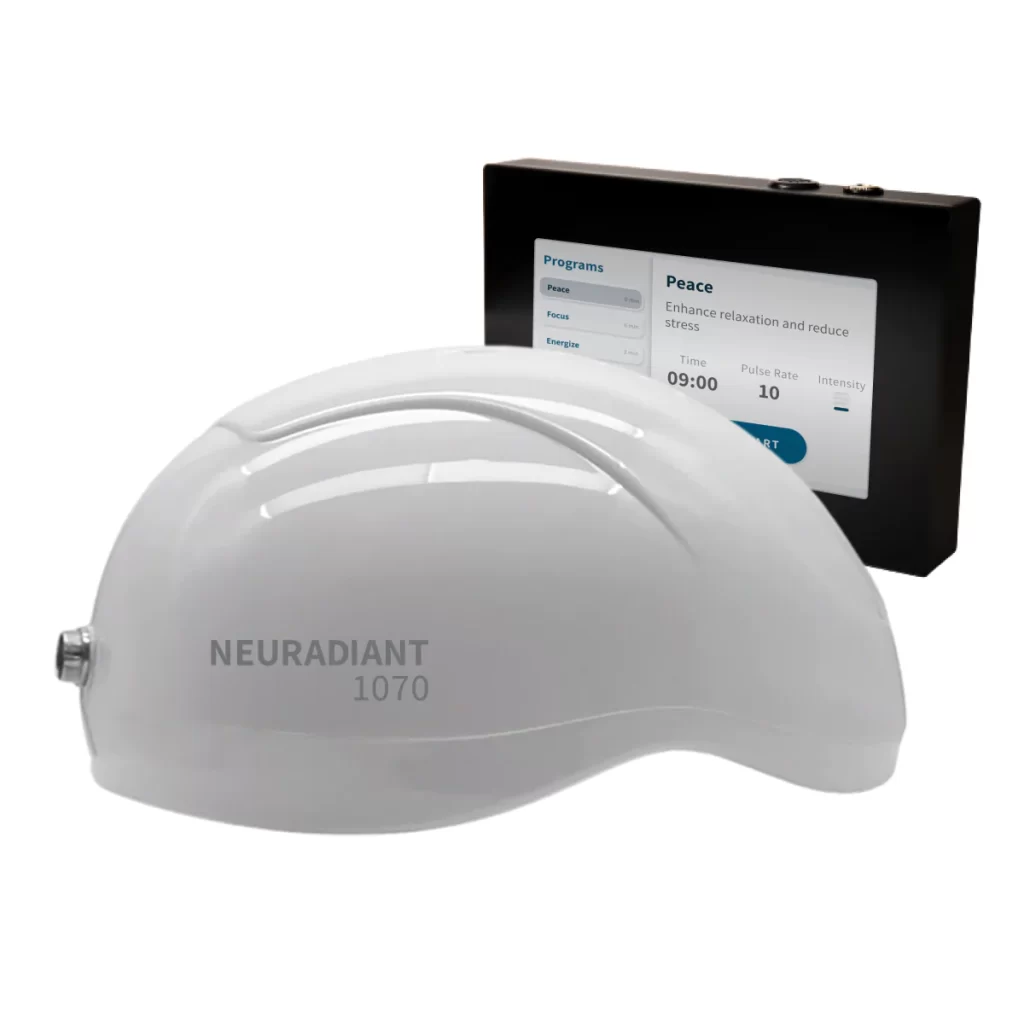
As you know by now, neurofeedback therapy is a safe and effective technique, becoming popular among people from all over the world.
Many known names, like ex-CEO of Twitter Jack Dorsey, use light therapy to boost their brain performance. NASA too has been using light therapy for more than 50 years, in order to treat wounds since, without gravity, muscles and bones tend to atrophy, which means that wounds heal slower.
Neurofeedback therapy is a method that is gaining traction at this very moment. If you want to experience significant benefits from this too, reach out to Neuronic to learn more about the science behind Neuradiant 1070.
You can also check what others are saying about the Neuradiant 1070 here.
Get your discount here :




